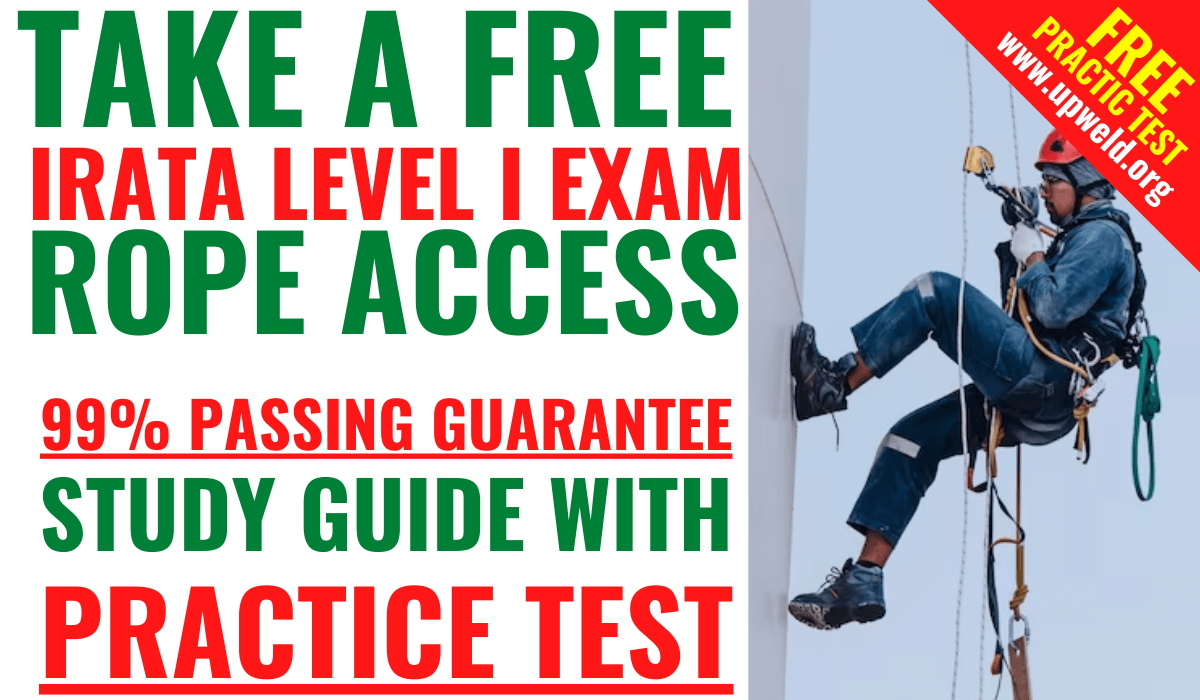Take A Free IRATA Rope Access Level 1 Exam Practice Test with the Latest IRATA Questions And Answers.
Are You Looking for a Free IRATA Rope Access Level 1 Exam Practice Test?

If your answer is yes then you are at the right website. Here You Can Take a Free Online IRATA Rope Access Level 1 Exam Practice Test and Improve Your IRATA Level 1 Exam Score. Here You Can Learn everything you need to know about IRATA Level 1 exam quickly and easily.
After completing the last Question you will see the IRATA Rope Access Level 1 Practice Test Answer Key, No cheating now! Once you complete the test and check your answers please leave us your score and any comments in the comments section below
We will help you to pass the IRATA/SPRAT Rope Access Level 1 Exam on the first attempt —99% Guaranteed. Our expert-written IRATA/SPRAT Rope Access Level 1 Examination practice material covers the actual exam topics with fully explained answers.
Take unlimited free IRATA/IRATA Rope Access Level 1 Quiz Course tests of any length. We have free new questions updated every week and you can study our material along with any other study materials.
People also ask
What is the meaning of IRATA or the Full Form of IRATA? or What does IRATA stand for?
Answer: The meaning of IRATA is Industrial Rope Access Trade Association, IRATA is a leading international trade organization for industrial rope access work in the height sector.
How long is IRATA Level 1 Certificate valid?
Answer: IRATA level Level 1 Certificate valid for 3 years
How much does IRATA training cost? or How much does IRATA Level 1 cost?
Answer: The Single IRATA or SPRAT training certification course cost is $1,800.
The dual IRATA or SPRAT training certification course cost $2,200.
This cost includes everything, including the certification.
Note: Costing changes according to time, make sure that whenever you want to do the course, once you go to the official website and check what piece is going on at that time.
Is rope access a good career?
Answer: It’s a fantastic career for those who enjoy working in the great outdoors, frequently in isolated settings, and who have a head for heights.
What is the starting salary for rope access?
Answer: In the UK, the average annual income for a rope access technician is roughly £55,000. However, a beginner rope access technician can expect to make about £32,000 annually, while a more experienced IRATA level 3 qualified rope access specialist can make up to £80,000 annually.
Note: The salary varies over time and is affected by the locations where there is a need for the job. As a result, we are unable to provide any definite information regarding wages.
How do I get IRATA certification? or How do I become certified by IRATA?
After completing a 4-day training course seminar, candidates go for IRATA certification. For IRATA certification, candidates must pass a written exam, an oral exam, and practical exams given by independent IRATA assessors or SPRAT evaluators.
If you want to get IRATA/SPRAT Rope Access Training and Certification Course, please feel free to contact us.